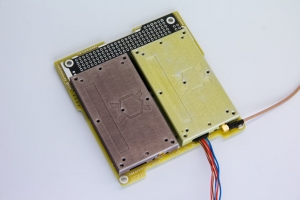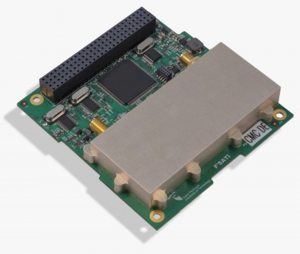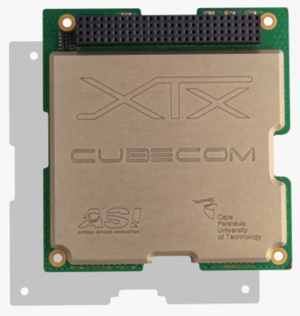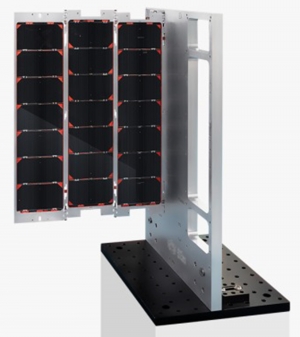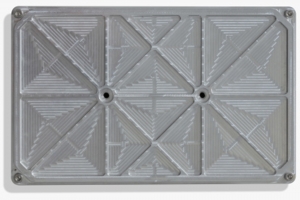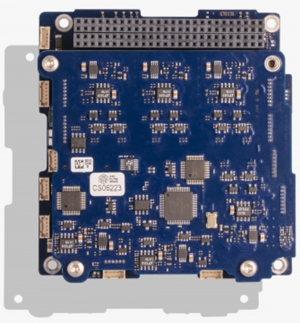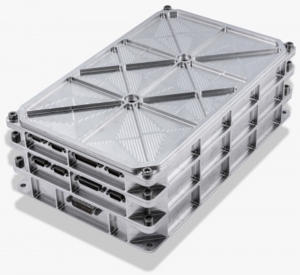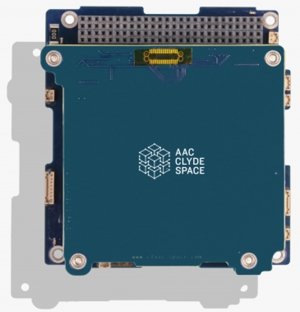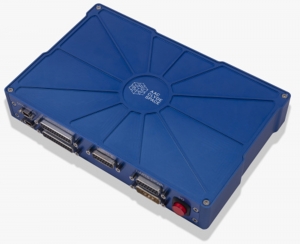Displaying items by tag: CubeSat
Cormorant cubesat transceiver
Cormorant
Being a crucial component our transceivers provide TT&C functionality while keeping low power consumption and uncompromised functionality built with many years of expertise. As a bonus some very interesting HAM-Radio friendly features are implemented.
Designed by OM1LD.
PULSAR - TM/TC
Our software-defined radios are highly adaptable communication solutions that have a 100% success rate on orbit. We offer systems ranging from VHF to X-band, Ku-Band and Ka-Band. Combined with our platform range, our transmitter and transceivers enable performance without compromise.
- TT&C and data downlink solutions
- A range of high-performance PULSAR antennas available
- Supports both amateur and commercial bands
- Compatible with all AAC Clyde Space structures
The PULSAR-TMTC is a compact telemetry and command radio designed for nanosatellite missions, compatible with the CubeSat standard with a CubeSat kit PC/104 form factor. The transceivers are ideal for space missions where a low data–rate uplink and downlink is required as well as a robust lower data-rate back-up radio for a higher data-rate radio. The AX.25 protocol implemented is popular among amateur radio enthusiasts. A transparent downlink mode is available with a CCSDS compatible ½ rate convolutional encoder.
PULSAR-TMTC implements 9600 bps GMSK and 1200 bps AFSK and operates in full-duplex (VHF/UHF) or half-duplex (UHF) mode. A combination of AFSK and GMSK is configurable for transmit and receive. These modes are selected as an I2C command and the default mode will be selected if a reset occurs. The default mode can be requested at time of production. The transceiver offers transmit and receive frequencies covering both amateur and commercial bands.
PULSAR - Compact Transmitter
Our software-defined radios are highly adaptable communication solutions that have a 100% success rate on orbit. We offer systems ranging from VHF to X-band, Ku-Band and Ka-Band. Combined with our platform range, our transmitter and transceivers enable performance without compromise.
- TT&C and data downlink solutions
- A range of high-performance PULSAR antennas available
- Supports both amateur and commercial bands
- Compatible with all AAC Clyde Space structures
PULSAR-DATA compact transmitter solutions are designed for advanced missions where a high data rate downlink is required.
PULSAR-STX
The low power consumption PULSAR-STX solution operates at amateur and commercial bands respectively and is user programmable within bands. The transmitter implements QPSK modulation with transmission data rates of up to 2 Mbps. It utilises an open network encoding scheme based on the IntelSAT IESS-308 specification which allows this product to be used with low-cost commercial satellite receivers.
PULSAR-XTX
The PULSAR-XTX is an extremely compact X-Band transmitter designed for CubeSat missions. The transmitter implements OQPSK and QPSK modulation with transmission data rates of up to 50 Mbps. It implements a CCSDS specification which allows this product to be compatible with commercial off-the-shelf satellite demodulators.
These solutions are supplied with user manuals, flight boards and STEP files for seamless system integration
PHOTON CubeSat Solar Array
Designed and qualified for maximum power generation and ease of platform integration. Our off-the shelf Solar Arrays offer over a decade of flight heritage and quality assurance. Double and Triple deployable solar arrays are available for missions requiring additional capacity for their CubeSat. These are recommended depending on customer power requirements and deployed along the long edge of the spacecraft.
Our plug-and-play solar array solutions integrate easily with our platform range; from body mounted to triple deployed solar panels, we utilise the latest manufacturing techniques to deliver highly reliable, low-mass, power generation solutions to our customers.
- Our solar panels support 3U to 12U platforms
- PCB Substrate with space-grade Kapton coverlay
- Coarse Sun sensors, Temperature sensors, and Magnetorquers included
- Fine Sun sensors as optional equipment
- Connectors to EPS and ADCS
- Compatible with AAC Clyde Space CubeSat Structures
STARBUCK-MICRO - Power Conditioning & Distribution Units
The Starbuck-Micro PCDU (Power Conditioning and Distribution Unit) was initially developed under a Swedish national mission and tailored to the requirements of the LEO microsatellite bus InnoSat. This is a state-of-the-art spacecraft architecture designed for innovative low cost research missions. The flexible and modular PCDU is designed for mission life of up to five years in LEO and implements both power conditioning and distribution of the regulated 28 V battery bus, as well an auxiliary isolated 5 V bus. The rigorous testing and extended qualification campaign compliments an innovative design approach that combines COTS and radiation hardened components and optimizes the reliability and performance characteristics of the system.
The Starbuck-Micro design builds on heritage from previous missions with customers such as ESA, NASA, JAXA and other commercial organisations. A number of design features are implemented to achieve optimized reliability characteristics. For example, discrete bipolar design is used for many functions rather than integrated circuits, which enable a thorough part stress design analysis of the system to be performed. Internal supply voltages are current limited with automatic restart and the FPGA design features Triple-Modular-Redundancy (TMR). Worst case analysis, thermal and structural analysis are performed to verify the system functionality at its operational limits.
STARBUCK-NANO - Power Conditioning & Distribution Units
Designed to be robust and reliable with performance failsafes, the flight proven STARBUCK-NANO range are one of the most flown power system ranges in the world. The STARBUCK-NANO is designed to support 1U, 2U and 3U CubeSats with body-mounted solar panels. The STARBUCK-NANO PLUS features an extended number of Battery Charge Regulators (BCRs) to support high-power CubeSats, from 3U spacecraft with deployable panels, right up to high performance 12U missions. Each power generation section is self-sufficient and does not require support from any other section within the EPS, the redundant solid-state isolation switches make it more reliable during launch operations.
Employing Maximum Power Point Tracking enables a highly efficient battery charge mechanism, that maximizes the power generation from the CubeSat solar arrays. Analog components and multiple inbuilt protection methods are employed to ensure safe operation during transport, launch and a full range of EPS telemetry via the I2C network. These features make the STARBUCK-NANO range the most robust solution on the CubeSat market.
STARBUCK-MINI - Power Conditioning & Distribution Units
AAC Clyde Space’s small satellite PCDU (Power Conditioning and Distribution Unit) solutions have demonstrated impressive space-based capabilities stretching across a range of applications, gaining a market reputation for reliability, resiliency and performance. STARBUCK-MINI provides high power 28 V outputs and redundancy for power distribution, as well as redundant command and control interfaces via CAN or RS422. Its innovative design combines COTS and radiation hardened components to optimize the reliability and performance characteristics of the ITAR free system.
The STARBUCK-MINI adopts a modular design approach which enables easy customization. The adaptable system utilizes flexible add-ons to meet the required number of power output interfaces for payloads on each specific mission and can be quickly adapted to customer product specifications. Integration of interfaces for deployment mechanisms, magnetic torquers and other equipment can also be accommodated through the addition of custom modules.
OPTIMUS-30/40/80 - Battery
OPTIMUS batteries offer high capacity with low mass and volume. Our high quality lithium polymer batteries are optimized for Low Earth Orbit (LEO) missions with a maximum altitude of 850km. Utilized over a large number of missions; especially US CubeSat missions, these New Space solutions have an excellent track record spanning almost two decades as one of the most flown and reliable spacecraft batteries. In order to ensure consistent quality levels the batteries undergo rigorous testing, including tests performed by ESA and NASA.
The battery systems all have autonomous integrated heater systems to enhance operation at low temperatures. Each system has multiple protection systems in place at a cell, battery, and system-level which will automatically respond to external fault conditions, protecting the battery and wider system from irrecoverable damage. The OPTIMUS Battery range is compatible with International Space Station deployment safety requirements and can be compatible with a wide variety of launch platforms, including crewed missions, when integrated into suitable platforms.
SIRIUS OBC DEVELOPMENT KIT - Command & Data Handling
Designed for advanced nano-satellite constellations in LEO and deep space exploration missions the readily available Sirius OBC with LEON3FT delivers ‘always-on’ reliable operations that work every time on time with precision performance. With enhanced error detection and correction, the Sirius OBC is tolerant to Single-Event-Effects (SEE) in logic and data storage. Fault tolerance is secured through TMR (Triple-Modular Redundancy) on all FPGA flip-flops and through boot flash and EDAC (error detection and correction) on memories. The development kit is powered through a mains 12V adaptor, eliminating the need for specialised power supplies or other laboratory equipment.
Sirius spacecraft avionics are modular in design. Modules can be combined to offer redundant configurations, or to simply accommodate mission specific requirements. The Sirius TCM LEON3FT has a standard single string system that consists of an on-board computer (Sirius OBC) and a combined mass memory with CCSDS stack (Sirius TCM). The OBC runs mission specific software and manage the spacecraft system. The TCM receives and stores payload data and platform housekeeping data while at the same time distributing telecommands and serving mass memory data to the transceiver.

